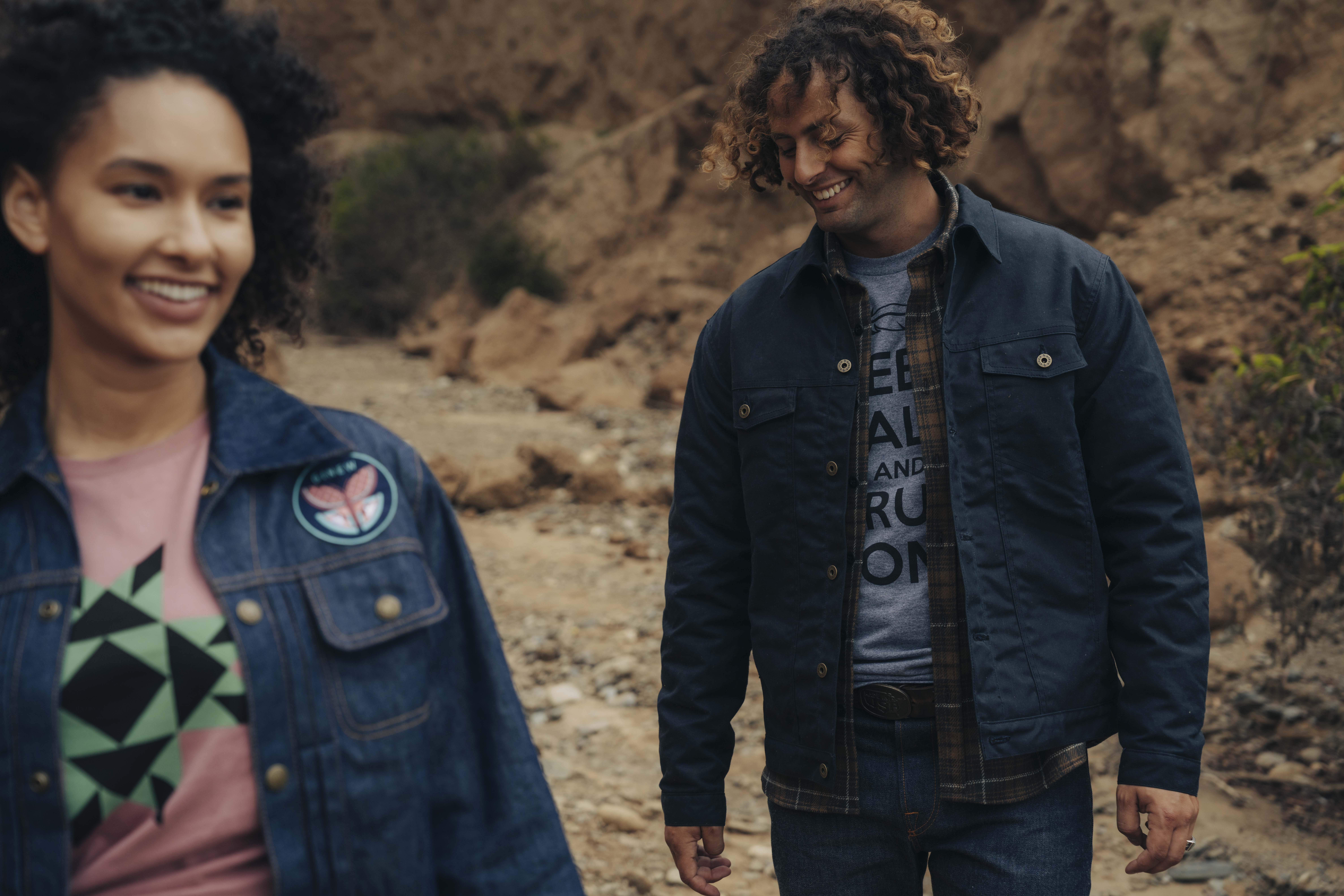When Zack Sam showed up at guide school, he had a pair of Chacos and a rain jacket. �I thought, �I�m ready,�� he says. �I showed up and a lot [�] The post What Two Indigenous Guides Want You...
When Zack Sam showed up at guide school, he had a pair of Chacos and a rain jacket. �I thought, �I�m ready,�� he says. �I showed up and a lot of people got all their own gear, PFDs, drysuits, throw-bags, helmets, everything, and I�m wearing one of the guest PFDs feeling like a greenhorn.�
Growing up in Window Rock on the Navajo Reservation in northeast Arizona, Sam says he didn�t know much about his home rivers as a kid, just catching quick glimpses of the Colorado, �I rarely saw the river, but I knew I was connected to the river via the watershed because when it rained or snowed heavy where I lived, it eventually all went down to Grand Canyon.� It wasn�t until Sam joined a group of friends hiking into Phantom Ranch that he realized the possibility of exploring Grand Canyon by the river itself, trading hiking shoes in for a raft.�
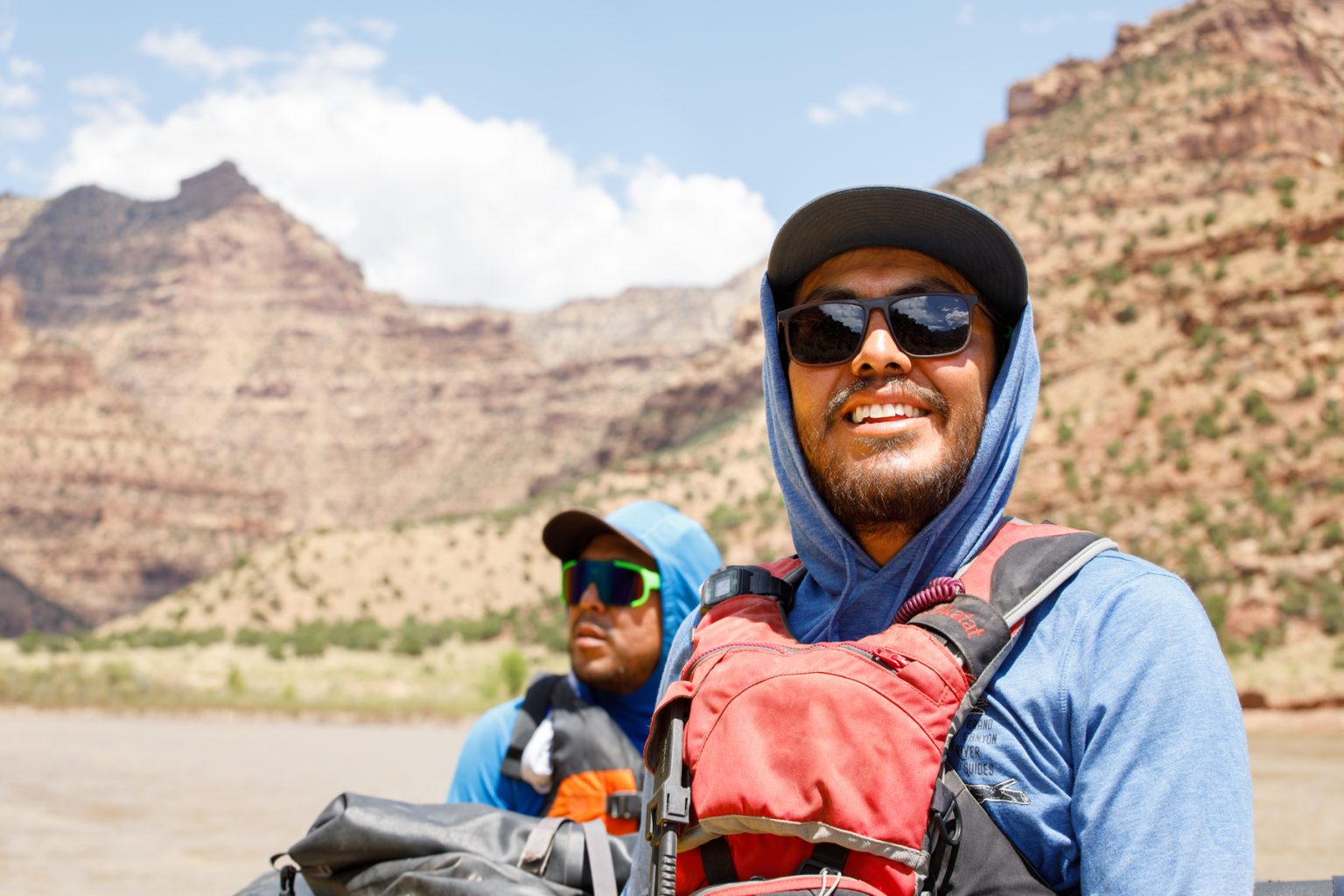 Zack Sam with his brother on an OARS trip in Utah | Photo by Cindi Stephan
Zack Sam with his brother on an OARS trip in Utah | Photo by Cindi Stephan
Now Sam is a seasoned guide, sharing the Colorado River with others who may not have an understanding of the river�s importance, environmentally or culturally. We chatted with Sam and Jaren Roberson, a fellow Indigenous guide, to learn more about their journeys to becoming guides�and some things they want to share with future guests.
A Grand Canyon Intro
The memory of seeing rafts in the Grand Canyon for the first time stuck with Sam. �We were hanging out early in the morning at Boat Beach when a bunch of yellow rafts stopped to go to Phantom Ranch, and I thought, �Oh, people do that? That�s a thing?�� He laughs, and says, ��Oh man, I want to do that.���
A few years later, Sam connected with a family friend who gave him the in he was looking for. His friend worked for OARS Dinosaur in Vernal, Utah. He says, �I was going through a hard time on the rez and she told me, �Sign up for guide school, if you do good, they�ll hire you.� That was it. That was my intro. My first week at OARS Guide School was the most time I�d ever spent on a river in my entire life.�
From the first day, he says he knew, �This is something I want to do.� And he hasn�t looked back.�
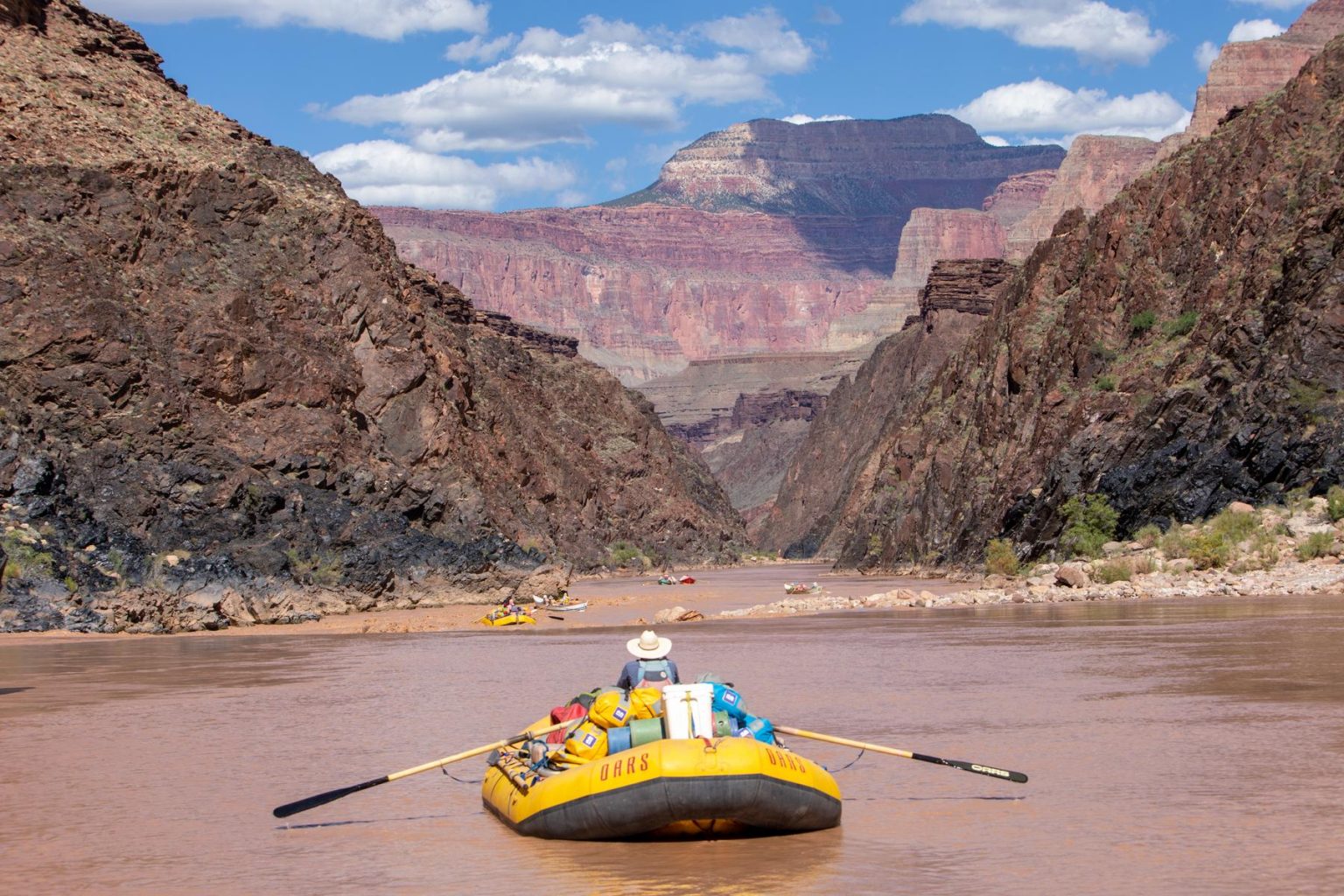 Rafting the Grand Canyon | Photo by Dylan Silver
Rafting the Grand Canyon | Photo by Dylan Silver
�I�m still working mostly in the Upper Basin,� Sam says, but the Grand Canyon continues to call him. �From the beginning, I knew, �I want to get to Grand Canyon.� That�s where I want to go.�
He started working alongside his friend at OARS Dinosaur and then moved to OARS Canyonlands in Moab a few seasons later, guiding on the relatively untamed stretch of the Colorado in Cataract Canyon. And Sam�s made his way downstream�now having guided on more than 15 Grand Canyon trips to date.�
The Power of �You Belong�
Jaren Roberson, a Navajo and Hopi guide, says he didn�t grow up understanding the cultural significance of the Grand Canyon from his home in Flagstaff�or feeling like he had access to that place. Grand Canyon Youth, an organization that offers educational outdoor expeditions connecting young people to the transformative power of the rivers and canyons of the Southwest, changed that�organizing a lower canyon trip from Diamond Creek to Pearce Ferry.�
On his first trip, Roberson burned his feet and hated it. But his second trip lit a fire.
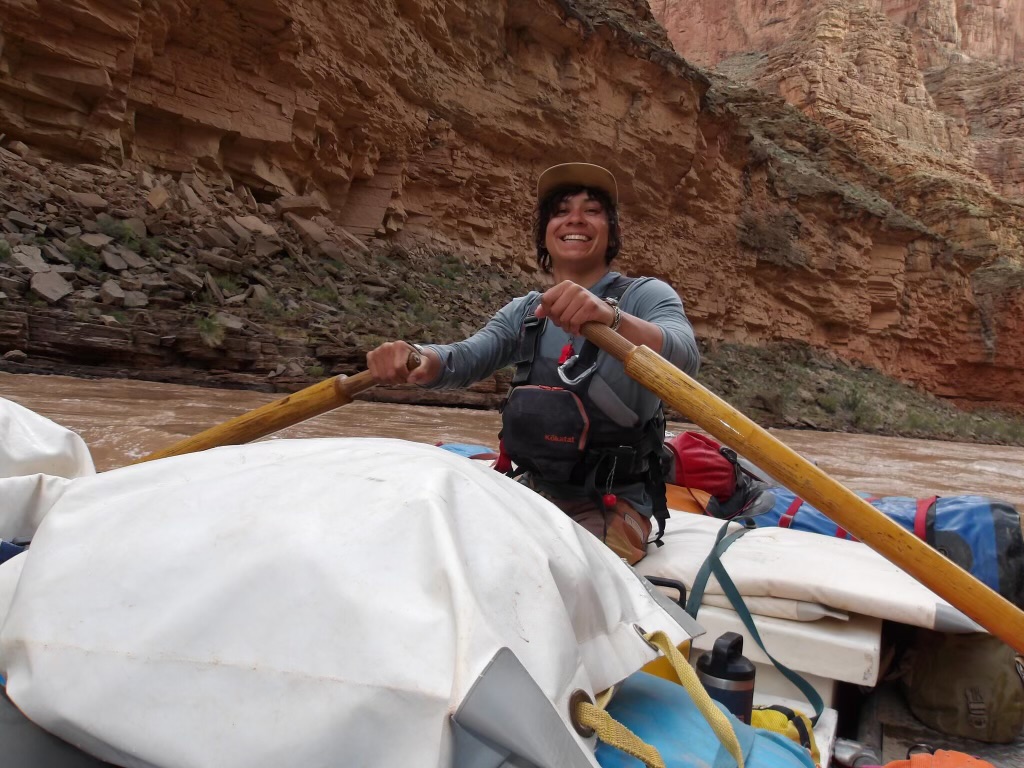 Raft guide Jaren Roberson rowing on the Colorado River | Photo courtesy Jaren Roberson
Raft guide Jaren Roberson rowing on the Colorado River | Photo courtesy Jaren Roberson
�I ended up going down Cataract Canyon with OARS in 2018 and I feel like I�d made my very first river family,� Roberson says. It was there Roberson rowed his first boat and rapids. Shortly after, he learned about R�os to Rivers, an organization that connects Indigenous youth from river basins around the world, and quickly joined an exchange in the Pacific Northwest that opened up an opportunity for guide training with OARS in Oregon.�
�One of the guides on the trip, she let me row a lot. She was very patient and she was very kind and taught me the ropes and showed me how water really moved,� Roberson says. �And then it was maybe the second or the third day of the river trip, and she was like, �Hey, do you want to work for us?��
After guiding for a season on the Rogue, Roberson made his way back to Flagstaff and it was at a Grand Canyon Youth workshop where he met Omar Martinez, a Grand Canyon river guide, and now Field Staff Director for Grand Canyon Youth. Martinez, originally from Nicaragua, offered Roberson an assistantship on a Grand Canyon rafting trip and helped connect him to something much more than the landscape.�
�To be completely honest, Omar took a chance on me and he believed in me,� Roberson says. �It was one of the best trips of my life because he talked to me about being Indigenous in these places.�
Martinez told him, �Hey, you belong down here.��
Roberson says there isn�t a lot of diversity in the outdoor and guiding community. Something, he says is, �A really hard barrier to break. But [Omar] made me feel like I was supposed to be there.�
Looking back, Roberson says his experiences with Grand Canyon Youth, R�os to Rivers, OARS, and finally assisting on his first Grand Canyon trip, �All kind of flowed.�
�If it wasn�t for Rios to Rivers, I never would�ve found my voice being an Indigenous person and being comfortable in my skin and sticking up for values that I believe in, and being there for my tribe and trying to be respectful of our culture and our history,� Roberson says. �The guides at OARS taught me how to row, how to work hard, and how to be a guide on the river.�
And Roberson says, �If it wasn�t for Grand Canyon Youth and their scholarships, I never would�ve been able to even get on that first river trip. If it weren�t for these supportive systems, I don�t think I would be here.�
Now, guiding trips in Grand Canyon and Idaho and a R�os to Rivers board member, he says he�s doing his best to bring those lessons forward, connecting and sharing stories with other Indigenous youth about landscapes and culturally significant places and how special it is to stoke that connection.�
�Because there�s more to these places than outdoor recreation sometimes,� Roberson says.
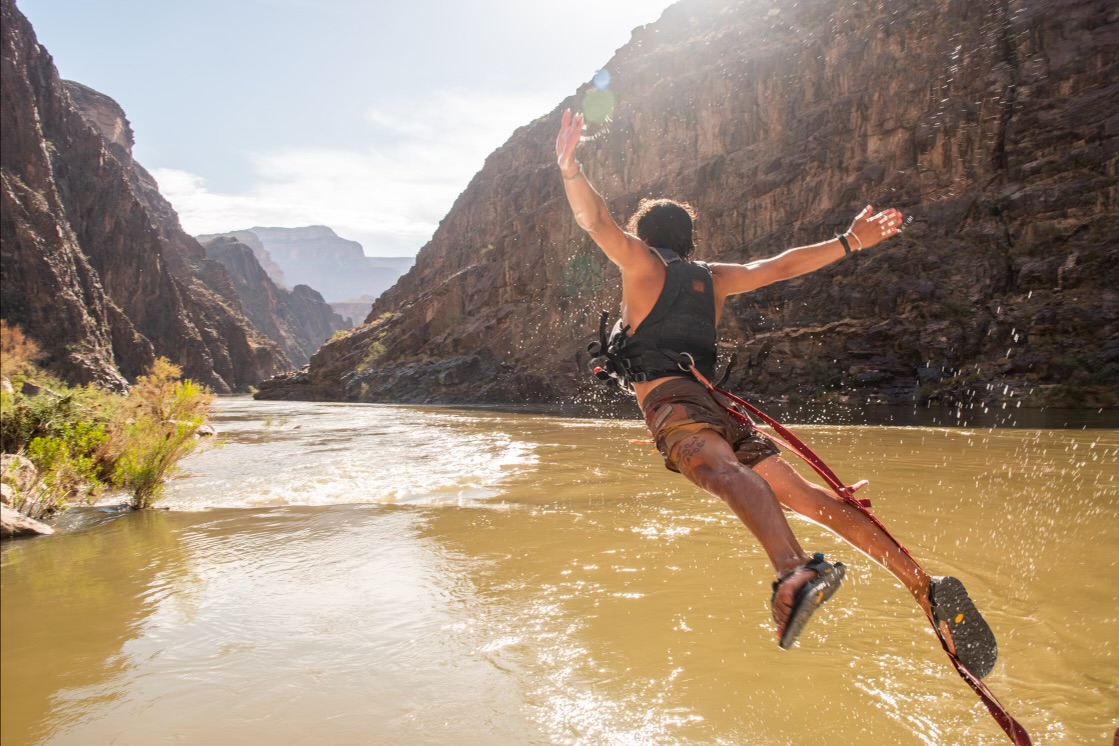 Jaren enjoying life on the river | Photo courtesy of Margeaux Bestard
Jaren enjoying life on the river | Photo courtesy of Margeaux Bestard
Much More Than Recreation
�Being in the canyon is a super sacred thing. Water is the movement, it�s our mother,� Roberson says. �And so when it comes to recognizing that and recognizing the fact that this thing, this living being is giving life to everything down here, it�s a very sacred place to be in�and I get the chance to go down and to be there.��
Roberson says when he�s in the canyon, �I feel unbelievably lucky to be this close with what feels like my ancestors, actually getting to see these places and getting to be in these spots where they lived for generations and generations, where they were giving to the land and where they were working as one, and where we still belong.�
Sam says that on commercial trips some of the strongest moments are when guests are challenged to do something that they thought they couldn�t do. He says that�s what he loves about being a guide, �There�s something really powerful about when someone stands with you and says, �I got you, you can do this.��
Sam�s favorite thing on those trips, besides getting access to these sacred places, are the people who truly appreciate the experience; who show up and enjoy the moment that they�re all in together. He says it�s about checking out of the front country, and putting yourself fully in backcountry mode.
�You�re in the heart. You�re right at the source of it. You�ve got to feel that. Be in the moment. Not the past or the future, be in that moment,� he says.
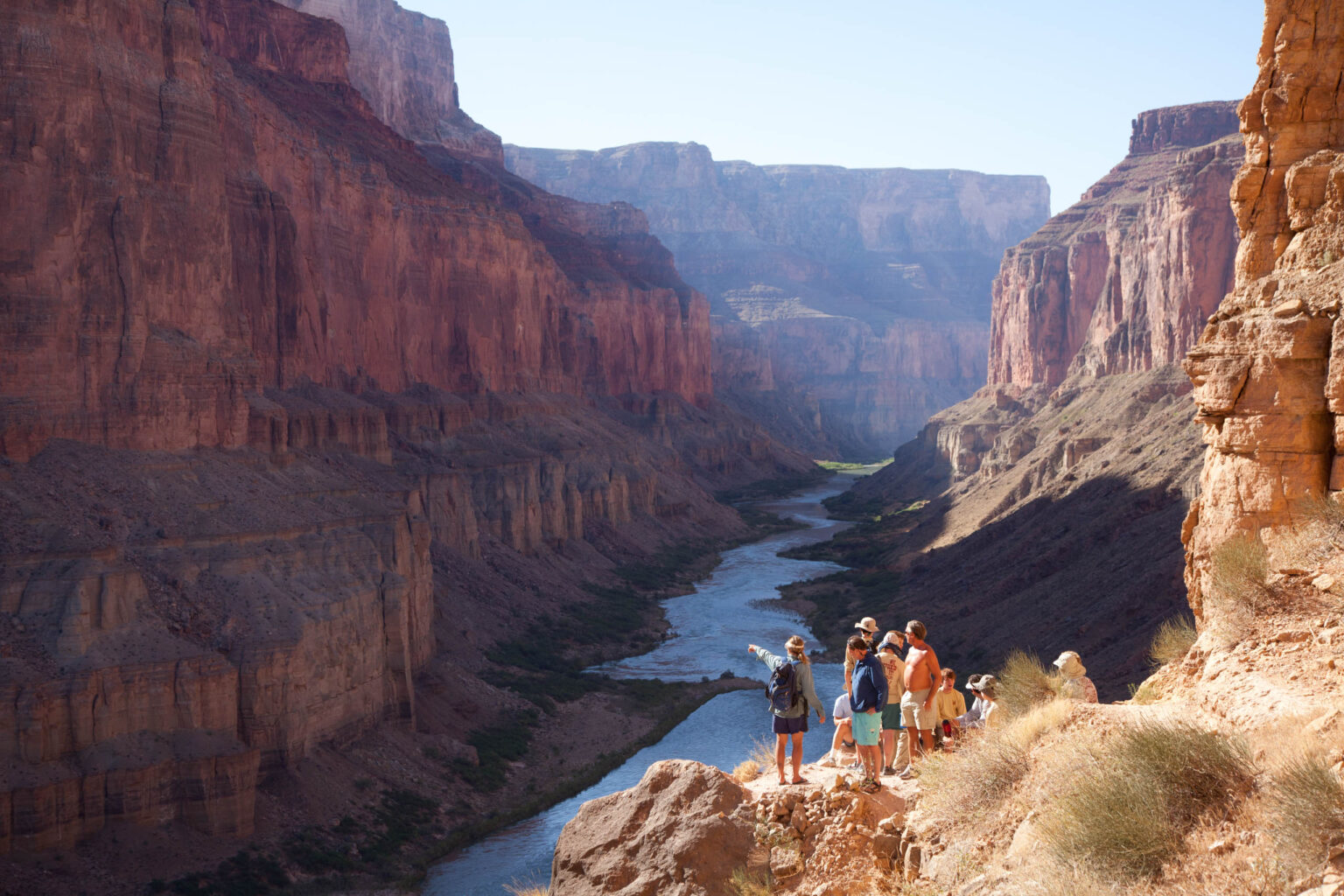 Guides give an interpretive talk on a hike to Nankoweap in Grand Canyon | Photo by Josh Miller
Guides give an interpretive talk on a hike to Nankoweap in Grand Canyon | Photo by Josh Miller
Holding Space�And Doing Your Homework
So when you�re planning your visit to the Colorado River, to Canyonlands or Grand Canyon, or your next adventure elsewhere, Roberson and Sam encourage you to keep a few things in mind.�
�You�re going down on this experience that some people will never get the chance to experience,� Roberson says. �I think just trying to hold space and recognizing what tribal lands are and what tribal lands mean. Trying to figure out what sacred land is and that when you step into these places you�re stepping into these sacred grounds, and trying to have some patience and empathy for a group of people that were kicked out of this place and who still don�t have full access to it.��
Both Roberson and Sam agree that learning a bit more about the history, geography and people of the area before arriving at the put-in can go a long way to create a more connecting and powerful experience for everyone. Roberson says, �I know it takes some effort, and I know learning about this history can be uncomfortable and awkward, but it�s a history that some people have to live with every day.�
Sam also emphasizes the importance of the river itself. He says, �If we don�t have rivers out here, we don�t have life.��
And for Sam, it�s not just about living, about surviving; he wants to see the river�and its communities�thrive. He says, �I would like to see more emphasis on protecting these waters, of conserving these waters. I feel so privileged to have access to the areas where these rivers run. I want others to continue to have that access as well.�
Some places to start:
Support Pam & George Wendt Foundation, Grand Canyon Youth,� R�os to Rivers and Grand Canyon River Guides What is a cultural landscape? Listen to Native Voices of the Grand Canyon Read and listen to Lifeways of the Little Colorado Stories from Grand Canyon Youth� The Returning Rapids Project� River to Rim by Nancy Brian Downriver by Heather Hansman I Am The Grand Canyon by Stephen Hirst Breaking the Current by Louise Teal Learn more about the land you�re on with the Native Land MapThe post What Two Indigenous Guides Want You to Know Before Your Next Trip appeared first on OARS.




